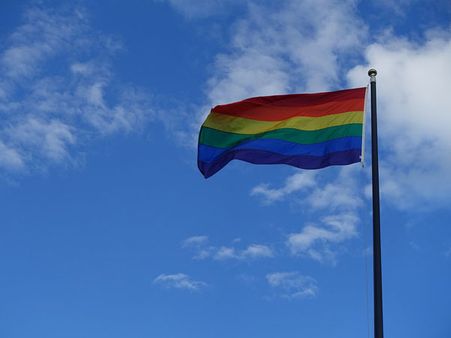Just In
- 55 min ago

- 18 hrs ago

- 18 hrs ago

- 21 hrs ago

Don't Miss
- Movies
 Arti Singh-Dipak Chauhan Wedding | Krushna-Kashmera REACT To Govinda Attending Big Occasion: Humara Aisa…
Arti Singh-Dipak Chauhan Wedding | Krushna-Kashmera REACT To Govinda Attending Big Occasion: Humara Aisa… - Finance
 Stock Market Live Updates: Market Likely To Open Flat; Nifty To Hold 22,350; Earnings In Focus
Stock Market Live Updates: Market Likely To Open Flat; Nifty To Hold 22,350; Earnings In Focus - Education
 Cochin Shipyard, IIM Kozhikode Invites Applications For USHUS Program To Support Maritime Startups
Cochin Shipyard, IIM Kozhikode Invites Applications For USHUS Program To Support Maritime Startups - Sports
 Who Won Yesterday's IPL Match 41? SRH vs RCB, IPL 2024 on April 25: Royal Challengers Bangalore End Losing Streak
Who Won Yesterday's IPL Match 41? SRH vs RCB, IPL 2024 on April 25: Royal Challengers Bangalore End Losing Streak - News
 MEA Dismisses US Human Rights Report On Manipur As 'Biased And Misinformed'
MEA Dismisses US Human Rights Report On Manipur As 'Biased And Misinformed' - Automobiles
 Royal Enfield Unveils Revolutionary Rentals & Tours Service: Check Out All Details Here
Royal Enfield Unveils Revolutionary Rentals & Tours Service: Check Out All Details Here - Technology
 Elon Musk’s X Is Launching a TV App Similar to YouTube for Watching Videos
Elon Musk’s X Is Launching a TV App Similar to YouTube for Watching Videos - Travel
 Escape to Kalimpong, Gangtok, and Darjeeling with IRCTC's Tour Package; Check Itinerary
Escape to Kalimpong, Gangtok, and Darjeeling with IRCTC's Tour Package; Check Itinerary
LGBT Flag: Meaning Behind The Colours And Its History
With LGBT rights getting legalised in India, we realise India is changing for the better.
When people see the rainbow flag, the first thing that comes to their mind is the LGBT community and their fight for equality.

However, have you ever thought what these colours in the rainbow flag mean? The significance and the history behind the colours used in the flag are interesting.
Check out the hidden meaning behind the flag colours.

The Flag Was Released In The Year 1978
A gay artist and civil rights activist Gilbert Baker made the first rainbow pride flag in response to an anti-gay community in the year 1978. The flag was seen in the San Francisco Gay Freedom Day Parade. Baker had made the flag by using the pink triangle that the Nazis had used to identify the gay individuals.

The Original Flag Had 8 Colours
When the flag was introduced initially, there were eight colours in the flag that included hot pink and turquoise colours. These colours were later dropped in the year 1998.

The Current Flag Has 6 Colours
The current flag is made up of six stripes which appear in a descending order: red, orange, yellow, green, blue, and violet colours. All these colours are positioned horizontally.

The Colours And Their Meaning
As the original flag had eight colours in it, the rainbow design had a different meaning to it, and each colour had its meaning.
•
Hot
pink
-
It
represents
sex.
•
Red
-
It
represents
life.
•
Orange
-
It
represents
healing.
•
Yellow
-
It
represents
sunlight.
•
Green
-
It
represents
nature.
•
Turquoise
-
It
represents
magic/art.
•
Indigo
-
It
represents
serenity.
•
Violet
-
It
represents
spirit.
-
 healthWhat's The Secret To Living Till 100? Well, They Are Simple, Tasty, And Fulfilling!
healthWhat's The Secret To Living Till 100? Well, They Are Simple, Tasty, And Fulfilling! -
 astrologyNumerology And Its Influence: How Numbers Can Impact Major Life Decisions
astrologyNumerology And Its Influence: How Numbers Can Impact Major Life Decisions -
 insyncGuru Nanak Jayanti 2023 Bank Holiday: Banks Will Be Shut In These States Today, Check List!
insyncGuru Nanak Jayanti 2023 Bank Holiday: Banks Will Be Shut In These States Today, Check List! -
 yoga spiritualityThe Three Sisters Of Sita: Life History And Cause Of Death
yoga spiritualityThe Three Sisters Of Sita: Life History And Cause Of Death -
 faith mysticismSix Guides That Help You Reach Your Destination In Life
faith mysticismSix Guides That Help You Reach Your Destination In Life -
 faith mysticismParamahansa Yogananda: Priceless Quotes To Be Treasured And Remembered
faith mysticismParamahansa Yogananda: Priceless Quotes To Be Treasured And Remembered -
 faith mysticismHow The Pandava Prince Yudhishthira Was Humbled By A Small Mongoose
faith mysticismHow The Pandava Prince Yudhishthira Was Humbled By A Small Mongoose -
 faith mysticismHow To Perform Your Duties Regardless Of Results, Take A Cue From Mahabharata
faith mysticismHow To Perform Your Duties Regardless Of Results, Take A Cue From Mahabharata -
 lifeHow To Achieve Work Life Balance: 21 Tips That Will Come Handy
lifeHow To Achieve Work Life Balance: 21 Tips That Will Come Handy -
 wellnessYou Might Live Longer If You Have A Sense Of Purpose, Study
wellnessYou Might Live Longer If You Have A Sense Of Purpose, Study -
 beautyIs Life Really Easier For Attractive People?
beautyIs Life Really Easier For Attractive People? -
 wellnessEvery Seven Years Comes With A New Life Challenge: What Happens To Us During These Phases?
wellnessEvery Seven Years Comes With A New Life Challenge: What Happens To Us During These Phases?


 Click it and Unblock the Notifications
Click it and Unblock the Notifications



